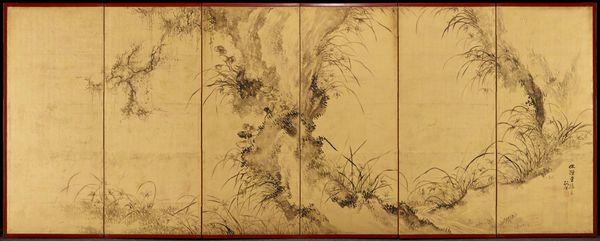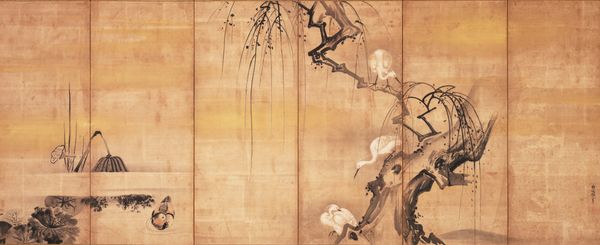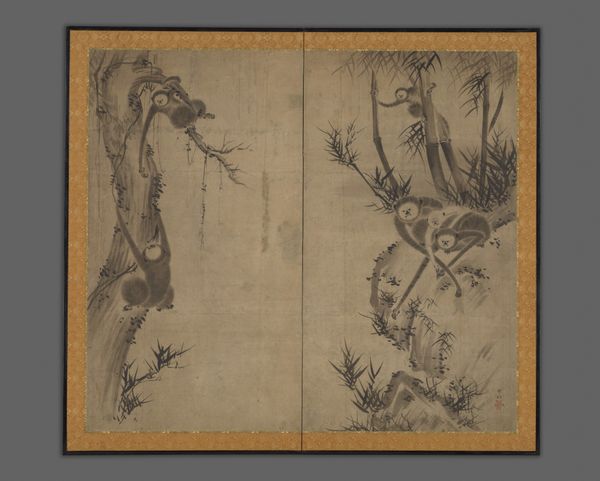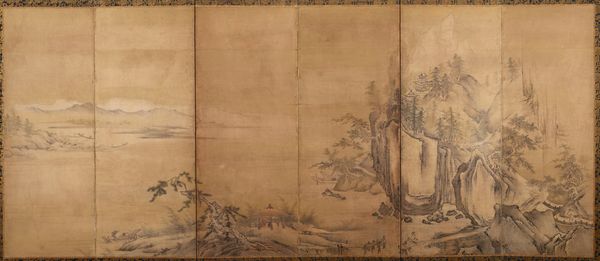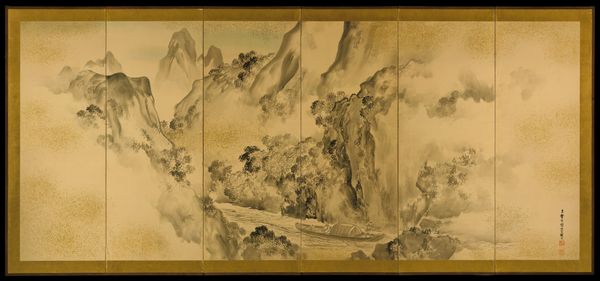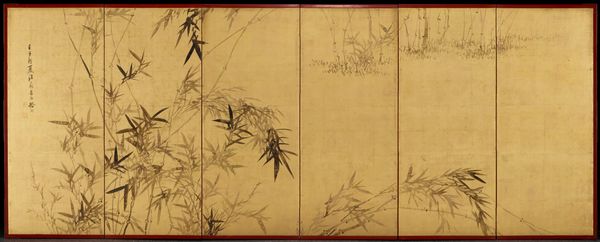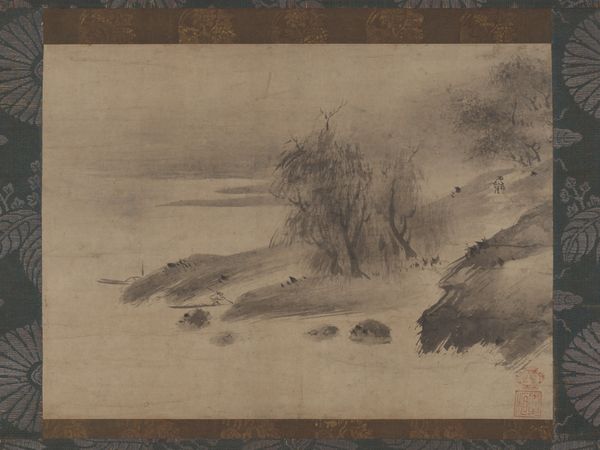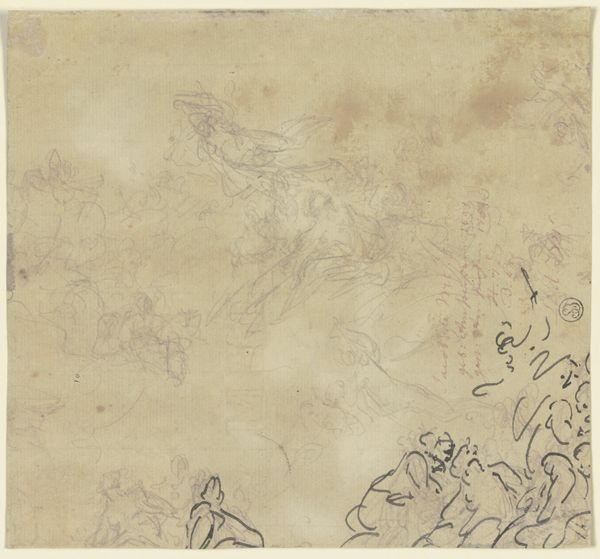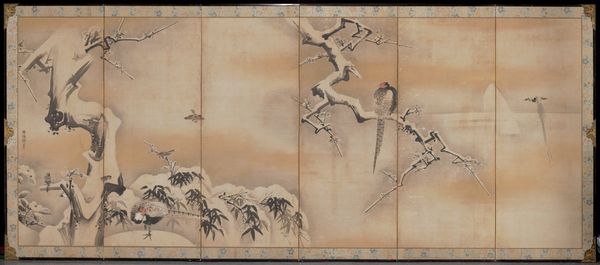![Egrets in Willow [left of the pair Egrets in Plum and Willow] by Sesson Shūkei 雪村周継](/_next/image?url=https%3A%2F%2Fd2w8kbdekdi1gv.cloudfront.net%2FeyJidWNrZXQiOiAiYXJ0ZXJhLWltYWdlcy1idWNrZXQiLCAia2V5IjogImFydHdvcmtzL2I3OGRhN2ZiLTllNTgtNGNhNC04ZDI0LTJjZDdlZWRhZWFhNS9iNzhkYTdmYi05ZTU4LTRjYTQtOGQyNC0yY2Q3ZWVkYWVhYTVfZnVsbC5qcGciLCAiZWRpdHMiOiB7InJlc2l6ZSI6IHsid2lkdGgiOiAxOTIwLCAiaGVpZ2h0IjogMTkyMCwgImZpdCI6ICJpbnNpZGUifX19&w=3840&q=75)
Egrets in Willow [left of the pair Egrets in Plum and Willow] c. 16th century
0:00
0:00
drawing, paper, ink-on-paper, ink
#
drawing
#
asian-art
#
landscape
#
figuration
#
paper
#
ink-on-paper
#
oil painting
#
ink
#
realism
Dimensions: 69 1/4 x 24 in. (175.9 x 60.96 cm) (each fold)
Copyright: Public Domain
Editor: Here we have "Egrets in Willow" created around the 16th century by Sesson Shukei, an ink-on-paper drawing. There's something so tranquil about the muted tones, like a dream fading at the edges. What captures your attention most when you look at this work? Curator: It whispers to me of impermanence. Look at how the ink bleeds, creating soft edges, blurring the line between the solid world and the ethereal. Shukei isn't just painting egrets; he's capturing the fleeting moment of their existence within a vast, ancient landscape. Editor: I hadn't really thought about the impermanence angle, but it definitely rings true now that you point it out. Does the subject matter contribute to this effect? Curator: Absolutely. Egrets, symbols of purity and longevity in some traditions, are juxtaposed against the willow, which, though strong, weeps and sways, yielding to the wind. Notice how he positions them too—some hidden, some flying off to the other panels from a separate piece—nothing remains perfectly fixed. It feels intuitive, spontaneous, despite the clear mastery of technique. You know, do you ever get the feeling that the best art feels almost inevitable? Editor: I think so, yeah, when it feels right, almost effortless... I definitely get that sense here, but I don't have the words for why. It also feels very traditionally Asian because the foreground, middle ground, and background seem flattened somehow. Curator: Precisely! It challenges our conventional western idea of perspective, flattening our understanding, encouraging the viewer's eye to dance across the picture plane, absorbing all its detail slowly. Shukei urges you to lose yourself in the art! What do you think of that? Editor: I love that idea! This has made me think so much more about this piece, more than I anticipated, actually. Thanks! Curator: Likewise, the beauty of art is truly unlocked by another. Let's move on to the next piece, shall we?
Comments
minneapolisinstituteofart almost 2 years ago
⋮
Born in remote eastern Japan, far from the cultural center of Kyoto, Sesson Shūkei taught himself to paint by studying the brush styles of earlier Chinese and Japanese masters, whose works were held in many old collections in the region. These screens reveal his keen interest in the Chinese Zen painter-monk Muqi (c. 1210–after 1269). Of the dozens of extant paintings by Sesson, a Zen priest himself, none so clearly attests to his admiration for Muqi as this misty, moonlit scene of herons cavorting around a gnarled old plum tree and willow. Using the so-called “boneless” technique for which Muqi was famous, Sesson avoided contour lines, relying instead on soft washes of ink. He also borrowed several motifs directly from paintings by Muqi. Indeed, this pair of screens is as much a visual eulogy to the Chinese master as they are an evocative picture of auspicious bird and trees.
Join the conversation
Join millions of artists and users on Artera today and experience the ultimate creative platform.
